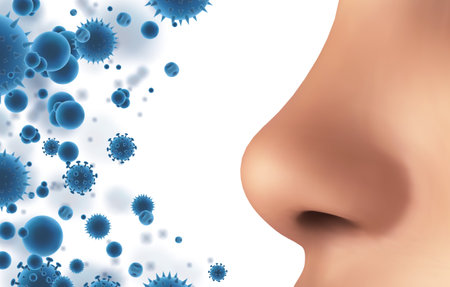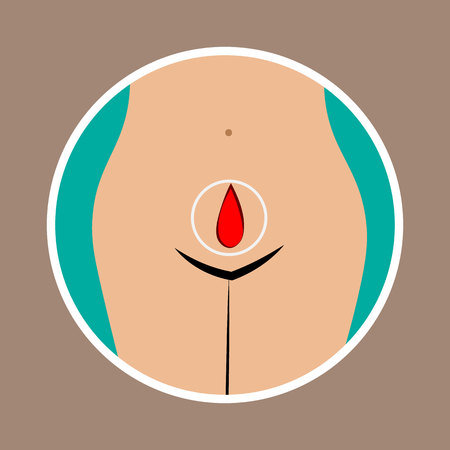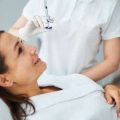Understanding Moles & Skin Tags in the Indian Context
Moles and skin tags are common skin growths that can appear on any part of the body. In India, due to our diverse range of skin tones and types, these marks often present differently compared to other populations. Moles, known as “til” in Hindi, are small, dark brown spots or growths caused by clusters of pigmented cells. They can be flat or raised, smooth or rough, and may even have hair growing from them. Skin tags, locally referred to as “maas ke til” or “skin ki phansi,” are soft, small, flesh-coloured pieces of skin that typically hang off the body. While both moles and skin tags are generally harmless, their appearance is quite frequent among Indians due to genetic factors, sun exposure, and hormonal changes. With India’s hot climate and outdoor lifestyle, people may notice more pigmentation changes on their skin. Although most moles and skin tags do not require medical attention, understanding their typical appearance and prevalence in Indian skin helps in recognising when something might need a closer look by a healthcare professional.
2. Common Causes & Risk Factors in India
Moles and skin tags are common skin conditions that can affect people of all ages across India. Their appearance is influenced by a mix of genetic, environmental, and lifestyle factors that are particularly relevant to the Indian context. Understanding these causes and risk factors can help you take preventive measures and know when it might be time to consult a doctor.
Genetic Predisposition
Many Indians have a family history of moles or skin tags, making genetics one of the primary causes. If your parents or close relatives have multiple moles or skin tags, you are more likely to develop them as well.
Climate & Environmental Factors
The hot and humid climate in many parts of India encourages sweating, which can lead to friction in skin folds—especially around the neck, armpits, and groin areas. This constant rubbing makes Indians more prone to developing skin tags compared to people in colder climates.
Lifestyle Influences
Factors such as obesity, wearing tight clothing, and certain daily habits play a major role:
| Lifestyle Factor | Impact on Skin Health |
|---|---|
| Obesity | Increases skin folds and friction, leading to higher risk of skin tags |
| Tight/Traditional Clothing (e.g., sarees, salwar) | Causes repeated friction, especially around the neck and waistline |
| Poor Hygiene | May contribute to irritation and inflammation in skin folds |
| Excessive Sun Exposure | Can trigger formation of new moles due to UV damage |
Hormonal Changes & Ageing
Hormonal changes during pregnancy, puberty, or due to health conditions like diabetes are also linked with an increased risk for both moles and skin tags. Age is another factor—these growths become more common as people get older.
Cultural Considerations in India
Certain cultural practices such as using herbal oils or home remedies may sometimes irritate the skin, leading to increased susceptibility. Additionally, the prevalence of diabetes and metabolic syndrome in India also raises the risk for developing skin tags.
Being aware of these Indian-specific factors can help you monitor your skin health more effectively and seek timely medical advice when needed.

3. When to Monitor & When to Worry
For many Indians, moles and skin tags are common and usually harmless. However, it is important to know when a change in your skin should prompt you to be more careful or visit a doctor. Understanding the warning signs can help you catch problems early, including rare but serious conditions like skin cancer.
Guidelines for Monitoring Your Moles & Skin Tags
In India’s diverse climate, from the hot sun of Rajasthan to the humid coasts of Kerala, our skin faces unique challenges. Regularly check your moles and skin tags for any changes. The “ABCDE” rule is helpful:
Asymmetry: One half of the mole does not match the other.
Border: Edges are irregular, ragged, or blurred.
Colour: Uneven colours—shades of brown, black, red, white or blue.
Diameter: Larger than 6 mm (about the size of a chana dal).
Evolving: Any change in size, shape, colour, or height over time.
Warning Signs That Need Immediate Attention
If you notice any of these signs or symptoms with a mole or skin tag, especially if it appears suddenly in adulthood or looks very different from your other moles (the ‘ugly duckling’ sign), consult a dermatologist in India as soon as possible:
- Pain, itching or tenderness
- Bleeding or oozing fluid
- A wound that does not heal over weeks
- Sudden increase in size or swelling
Cultural Note for Indian Skin Tones
Darker Indian skin may show colour changes differently. Sometimes melanoma (a type of skin cancer) appears as a dark patch under nails or on palms/soles. Pay attention to new spots in these areas too.
Remember, most moles and skin tags are harmless. But being alert about changes is the best way to protect your health. If unsure, it’s always better to get expert advice from a qualified Indian dermatologist rather than ignoring something unusual.
4. Home Remedies: Indian Myths vs. Medical Advice
In India, many people rely on traditional home remedies for removing moles and skin tags. While some of these practices have been passed down through generations, it is important to separate myths from medically sound advice. Below is a comparison of popular Indian home remedies and what medical professionals actually recommend:
| Home Remedy | Common Belief | Medical Viewpoint |
|---|---|---|
| Applying Garlic Paste | Believed to remove moles by burning the skin | Can cause irritation, burns, and infections; not medically recommended |
| Tying Hair or Thread Around Skin Tag | Thought to cut off blood supply and make tag fall off | Might cause pain, infection, or scarring if done incorrectly; professional removal is safer |
| Lemon Juice or Apple Cider Vinegar | Believed to lighten or remove moles/tags naturally | No scientific evidence; may irritate skin and worsen condition |
| Ayurvedic Oils (Neem, Castor Oil) | Considered safe natural alternatives for removal | Might moisturize but do not remove growths; effectiveness unproven |
The Risks of Home Remedies
Although these methods are widely practiced, they can be risky. Unsupervised treatments may result in skin infections, allergic reactions, scarring, or even delayed diagnosis of serious conditions such as melanoma. It is especially unsafe to use sharp objects or chemical substances without medical guidance.
Why Professional Guidance Matters
Doctors in India emphasize the importance of proper diagnosis before any treatment. Only a healthcare professional can differentiate between harmless growths and those that require further examination or removal. Medical procedures are also sterile and effective, minimizing risks associated with home remedies.
When to See a Doctor?
- If a mole or skin tag changes in size, shape, color, or bleeds
- If you experience pain, itching, or signs of infection after trying a remedy
- If you are unsure about the nature of your skin growth
Trusting professional medical advice over common myths ensures your safety and health.
5. Consulting a Skin Doctor: What to Expect in India
If you notice unusual changes in your moles or skin tags—like rapid growth, colour changes, bleeding, or pain—it is wise to consult a dermatologist in India. You can approach dermatologists at private clinics, large hospitals, or government medical centres. In most Indian cities, you may book an appointment directly; in smaller towns, you might need a referral from a general practitioner.
How to Prepare for Your Visit
Before visiting the skin doctor, note down any changes you have observed and your family history of skin conditions if any. Carry your Aadhaar card or relevant ID proof for registration purposes. For private clinics, appointments are often available through phone calls or apps like Practo.
Costs and Fees
Consultation fees in India vary widely. In metropolitan cities like Mumbai, Delhi, and Bangalore, private dermatologists may charge between ₹500 and ₹1500 per visit. Government hospitals offer more affordable options—sometimes as low as ₹50–₹100—but waiting times can be longer.
What Happens During the Consultation?
The dermatologist will examine your skin closely and may use a dermatoscope for a detailed check. If necessary, they might suggest tests such as a biopsy to rule out serious issues. Removal procedures for moles and skin tags—like excision or laser treatment—are generally performed under local anaesthesia and can be done as day-care procedures.
Aftercare and Follow-Up
Your doctor will explain aftercare steps such as wound cleaning and sun protection. Follow-up visits are usually scheduled to monitor healing or discuss test results. Remember, seeking timely medical advice helps prevent complications and ensures peace of mind regarding your skin health in India.
6. Prevention & Skin Care Tips for Indian Skin
Taking good care of your skin is especially important in India, where the climate, traditions, and daily routines can affect how moles and skin tags develop. Here are some easy and practical tips to help you prevent these skin concerns while respecting Indian lifestyles.
Protect Your Skin from the Sun
The harsh Indian sun can trigger changes in moles and cause skin irritation. Always use a broad-spectrum sunscreen with at least SPF 30, even on cloudy days. Cover exposed areas with cotton clothing and use an umbrella or dupatta when outdoors during peak hours.
Keep Your Skin Clean and Dry
High humidity in many parts of India can make your skin sweat more, leading to friction and possibly skin tags. Bathe daily using mild soap, and thoroughly dry areas prone to moisture, like underarms and neck folds. This is especially important during monsoon season.
Choose Simple, Natural Skincare
Opt for gentle skincare products without harsh chemicals. Many Indian households use natural ingredients like neem, turmeric, and aloe vera. These not only soothe the skin but also support overall skin health. Avoid over-scrubbing or using home remedies that may irritate sensitive areas.
Manage Weight and Friction
Excess weight can increase skin folds and friction, making you more prone to skin tags. Try to maintain a healthy diet with plenty of fruits, vegetables, and water – all commonly found in Indian kitchens. Wear comfortable, loose-fitting clothes to reduce chafing.
Regular Self-Examination
Check your skin once a month for any new or changing moles or tags. Use a mirror for hard-to-see places or ask a family member to help. Early detection is key in preventing complications.
When in Doubt, Consult a Doctor
If you notice any changes in your moles—like itching, bleeding, sudden growth, or colour change—or if skin tags become painful or infected, visit a dermatologist promptly. In India, many cities have qualified doctors who can give you expert advice tailored to your needs.
By following these simple habits rooted in Indian tradition and daily life, you can keep your skin healthy and minimise worries about moles and skin tags.


